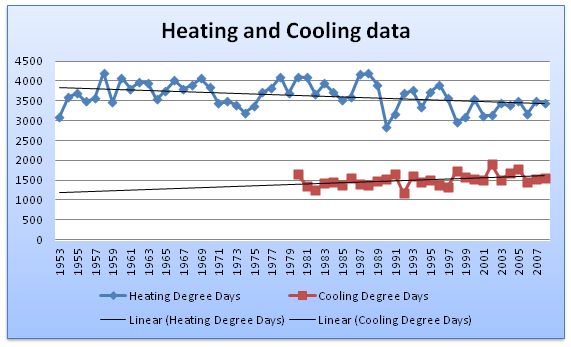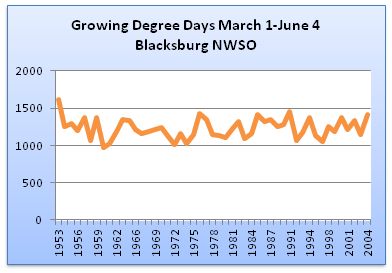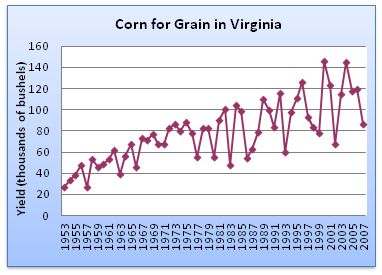Economic Impacts
Climatic changes can have a number of economic impacts. Economic activities that are readily affected by changes in temperature, precipitation and CO2 include crop farming, tree harvests and fishing populations. Strong connections may be difficult to establish in some cases because there are a variety of other factors affecting economic activities. For example, which crops are grown depend as much on the market for a given crop as the suitability of the climate. Also, improvements in growing techniques or changes in crop strains may improve crop yield regardless of climatic changes.
Direct economic impacts can be seen in our heating and cooling demands (calculated as heating degree days or cooling degree days). These are an index of the amount of heating or cooling necessary to keep a building at a given temperature (typically 65 F) and are based on the outside temperature.

A similar index can be used to calculate growing/living/breeding conditions for plants and insects. This type of index is frequently used for agricultural practices to see if plants are growing on schedule. This allows farmers to predict harvest dates, determine which plant strains or hybrids to plant, and assess the likelihood that other factors (such as lack of fertilizer) are contributing to poor plant growth. When used for agriculture, the index is known as Growing Degree Days (or GDD) and it indicates the number of days in the growing envelope for plant development. Below is a graph showing GDD for corn growth in Blacksburg, VA over a 50 year time period. Click here for more information on calculating and using GDD for corn agriculture.

The GDD varies over time and from year to year, but there are no obvious trends in the data. Because of the way this index is calculated, results will differ depending on the starting and ending dates used for the calculations. The graph below shows corn yield for the state of Virginia obviously trending upwards overtime. Although this may be in part due to climatic influence, it is also impacted by increased harvest efficiencies, new corn hybrids, changes in demand for corn and other non-climate related factors.


